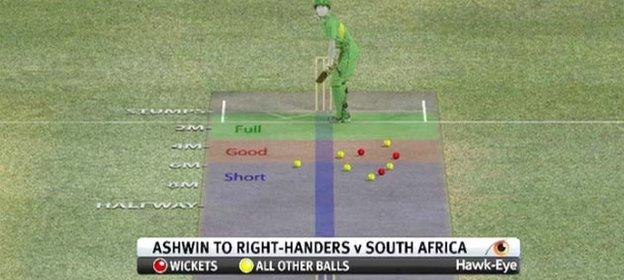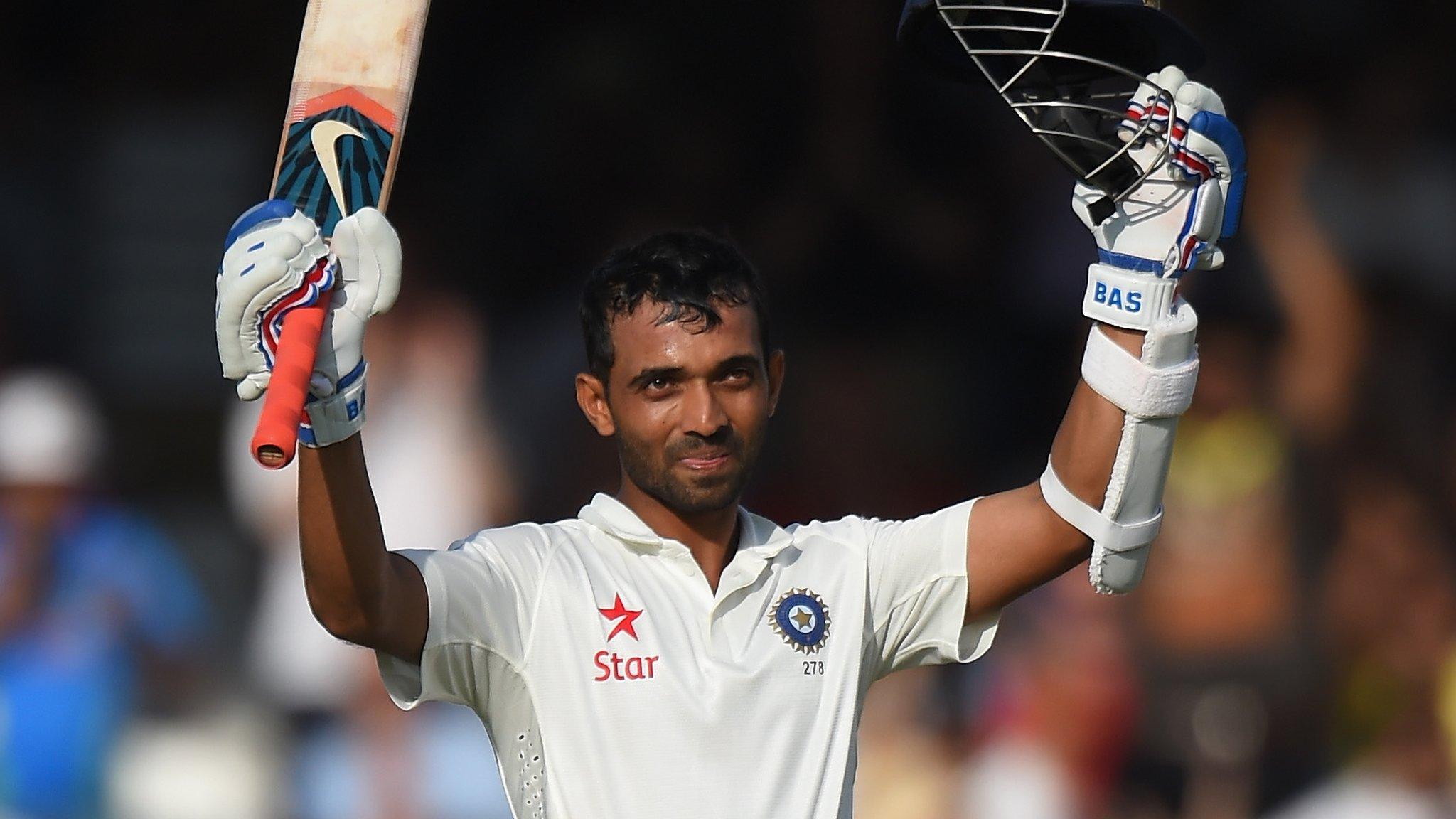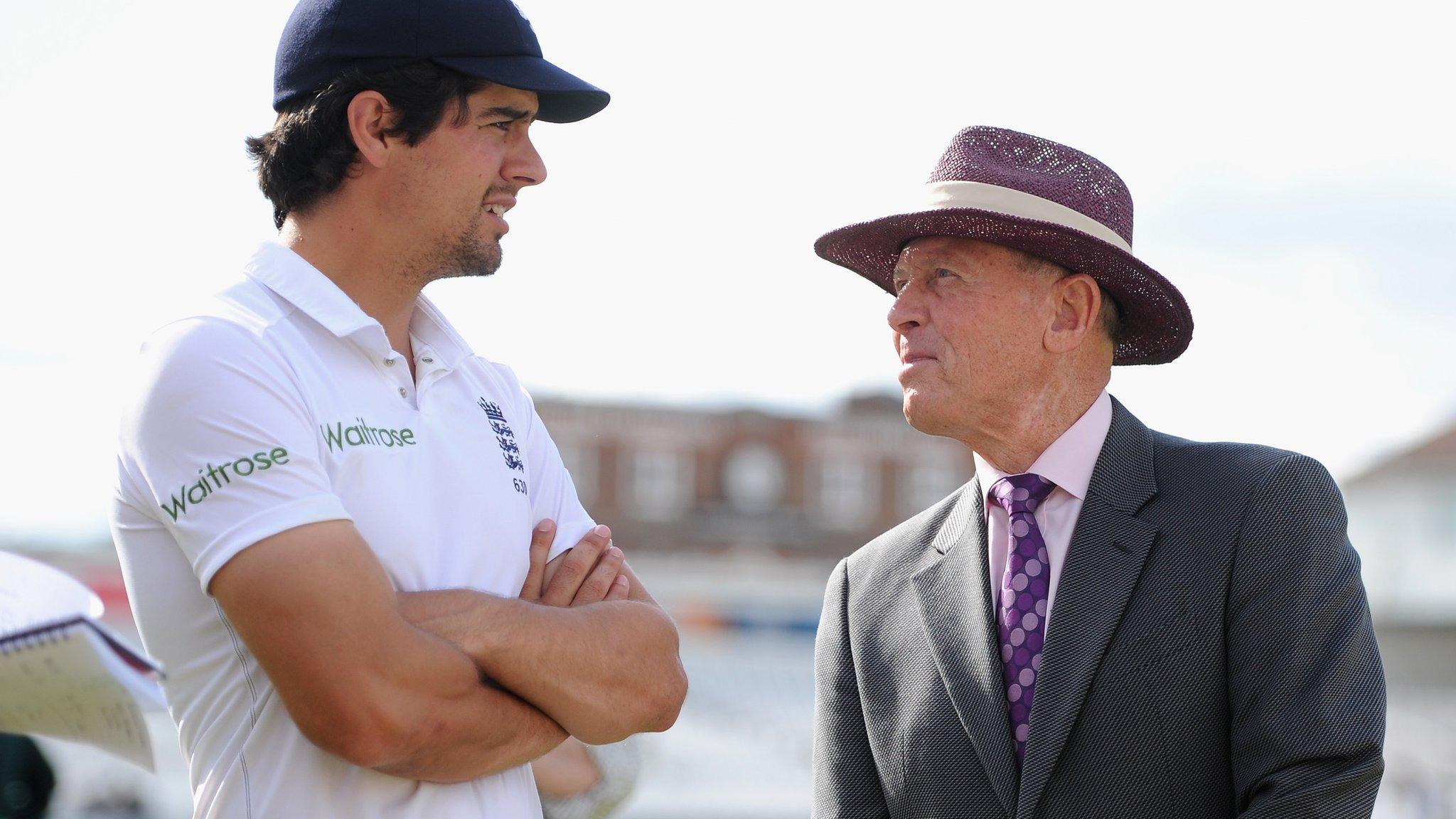England v India: Simon Hughes on the secrets of spin bowling
- Published
'The Analyst' Simon Hughes on the secrets of spin bowling
'The Analyst' and BBC Test Match Special commentator Simon Hughes will be providing regular pieces for the BBC Sport website and TMS throughout England's Test series with India.
The leading Test wicket-taker of all time is a spinner - Sri Lankan Muttiah Muralitharan, with 800 Test wickets., external In second place is another spinner - Australian Shane Warne with 708. , external
Apart from spinning the ball miles and having great control, these bowlers had one other thing in common - they could spin the ball both ways.
We have seen England off-spinner Moeen Ali in action in the first Test against India, but it is vital for a successful spinner that a) they really spin the ball and b) they have a variation that makes them unpredictable.
Leading England spinners in Tests | |||
|---|---|---|---|
Tests | Wickets | Average | |
Derek Underwood | 86 | 297 | 25.83 |
Graeme Swann | 60 | 255 | 29.96 |
Jim Laker | 46 | 193 | 21.24 |
Tony Lock | 49 | 174 | 25.58 |
Monty Panesar | 50 | 167 | 34.71 |
Fred Titmus | 53 | 153 | 32.22 |
The googly - the leg break out of the back of the hand that turns the other way - has always been the leg spinner's alternative delivery. Until the advent of Murali and the Pakistani Saqlain Mushtaq, the off-spinner had to rely on the arm ball - the one that went straight on.
Graeme Swann took a stack of wickets for Englad with that technique, as batsmen allowing for the turn played down the wrong line.
But Saqlain and Murali's "doosra" - Hindi for "the other one" - changed all that. Bowled out of the back of the hand with the same wrist rotation as the off-break, it spun the other way and was hard to pick, making the orthodox off-break more dangerous.
Batsmen playing these bowlers became riddled with uncertainty.

Moeen Ali took one wicket on day one of the second Test against India at Lord's
Numerous versions of the doosra evolved, the most deadly of which is Pakistani Saeed Ajmal's, often bowled from round the wicket and with exactly the same unusual grip (spun off the middle finger rather than off the index and middle fingers combined). Ajmal's doosra actually spins like a leg break, and fast too.
The problem with the doosra though, is that it is virtually impossible to bowl without bending your elbow to get the ball down the other end with any pace.
You are allowed 15 degrees of flex, but many doosras exceed this limit, and Sri Lanka's Sachithra Senanayake has just been banned from bowling in international cricket for this very reason.
Moeen, fortunate to have Ajmal as a sort of mentor at Worcester, is working on his doosra and has bowled a few in the first Test against India. Anxious to keep within the legal limit, however, Moeen's doosras were quite slow and generally easy to pick.
But his opposite number in the India squad - Ravichandran Ashwin, who has not been picked for the first two Tests - has perfected another alternative delivery - the carrom ball, named after an Indian board game in which you flick counters across the playing surface.

Ashwin took all of his wickets against South Africa in the T20 World Cup with the carrom ball technique
The carrom ball, invented by Sri Lanka's Ajantha Mendis, is flicked out of the front of the hand and also spins the opposite way to an off-break, in other words from right to left.
The key to this delivery is that it is possible to bowl it with a straight arm, as Ashwin himself is keen to point out. He bowls a lot from round the wicket (like Ajmal's doosra) to exploit the rough outside the leg stump.
So far Ashwin has been highly effective at home - he was the fastest Indian to 100 Test wickets (18 matches) but less successful away with only nine Test wickets abroad at a cost of 75 apiece.
In this dry season it will be fascinating to see his and Moeen's development of their crafty deliveries during this series as both teams seek to evolve with their wonderful resident off-spinners - Swann and Harbhajan Singh - now a fading memory.
- Published18 July 2014
- Published18 July 2014

- Published17 July 2014

- Published15 July 2014

- Published17 July 2014

- Published18 October 2019
